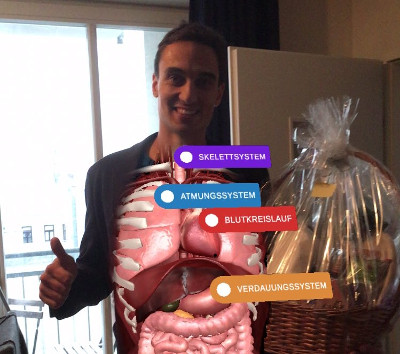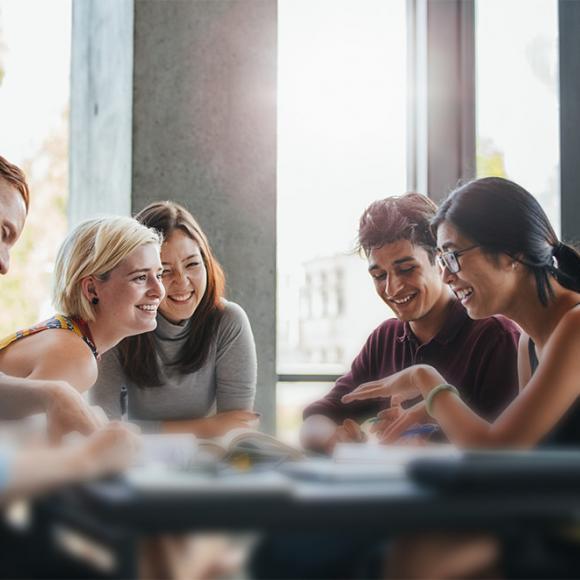 At the end of November, I had the privilege of attending Mahara Hui DACH18, Mahara Hui for Germany (D), Austria (A), and Switzerland (CH). The event was held at PH Wien, the University College of Teacher Education Vienna. There was a pre-hui day on 29 November 2018, and the two-day hui followed.
At the end of November, I had the privilege of attending Mahara Hui DACH18, Mahara Hui for Germany (D), Austria (A), and Switzerland (CH). The event was held at PH Wien, the University College of Teacher Education Vienna. There was a pre-hui day on 29 November 2018, and the two-day hui followed.
The hui itself was run as an unconference, so all participants were encouraged to propose sessions and participate in them. The sessions often had a short input from the session convenor and then everyone shared their opinions, arguments, and insights into the topic. Two keynote speakers provided additional thought-provoking input.
The pre-hui day
The day before the hui, I facilitated two workshops. In the morning, we reviewed video annotation platforms to check their suitability and integration possibilities for Mahara. PH Wien was involved in the PREPARE project that created an integration between a video annotation platform and Mahara, and shared insights from that project.
A number of the platforms we reviewed were available in a SaaS model, only allowing access to public videos rather than those privately uploaded by students. More investigation and testing of available platforms is needed to decide which one would be a good option to look into for integration possibilities for Mahara in general and specific organisations in particular.
In the afternoon, we had intended to create learning scenarios in which Mahara was used, to review existing functionality and see where it would be good to expand it. However, we soon started looking at templates to scaffold portfolio work, and I showcased a number of the new features in Mahara 18.10 to the point where everyone was about to call their IT support to check when they could upgrade.
The day ended with a concert by the Open Mic Sessions at PH Wien and a get together at a restaurant catching up with Mahara friends.
The keynotes
Neither keynote was Mahara-specific. Instead, each session expanded our horizons by looking at various important aspects in young people’s education, in order to foster career readiness and make learning attractive and engaging.
The first keynote was given by Dieter Omert, who is responsible for Audi’s apprenticeship training and professional development programme. Some of this apprenticeship programme’s methods could benefit from and be supported by portfolios. For example, lifelong learning and self-directed learning are both important, and would allow apprentices to have more freedom in their learning. Apprentices could also be encouraged to experiment and engage more in social learning.
Apprentices are prepared both for the immediate job and for the future. A mindset shift is essential to support new training formats online and in the workplace. Omert said that implementing self-guided learning is difficult, as training must combine traditional and modern methods. The “dual system” (apprenticeships with formal classes at a vocational school) in Germany works very well and should not be abandoned. However, new ways to learn need to be explored and incorporated to keep up with the current demand on companies.
 The second keynote, “Making the invisible visible”, was given by Josef Buchner, Scientific Assistant and Lecturer for Media Education at PH St. Gallen. At PH St. Gallen, bachelor students complete their studies with an electronic portfolio rather than a thesis. That is good news for future students, as their teachers will be knowledgeable in portfolio work.
The second keynote, “Making the invisible visible”, was given by Josef Buchner, Scientific Assistant and Lecturer for Media Education at PH St. Gallen. At PH St. Gallen, bachelor students complete their studies with an electronic portfolio rather than a thesis. That is good news for future students, as their teachers will be knowledgeable in portfolio work.
Buchner’s presentation looked at the various realities: reality, augmented reality, augmented virtuality, and virtual reality. His keynote offered us insight into another way of learning and engaging students with a medium that makes invisible aspects of something visible and thus provides a more direct engagement with and understanding of that thing.
We were encouraged to trial a few apps during the keynote and experience augmented reality directly. It became clear how using apps that worked in different realities can support exploratory learning.
The sessions
After each keynote, a collective planning session gave all participants the chance to propose discussion topics for the rest of the day. Some people had proposed ideas online prior to the event, while others chose their topic on the spot. Not every topic needed to be Mahara-related: it was important to cover a wide range of learning-related questions and insights. As a result, sessions ranged from classical Mahara topics like reflective practice in portfolios, new feature showcases and translating Mahara to eduScrum, to virtual reality and learning Korean in 30 minutes. Altogether, it was possible to attend up to seven different sessions.
Session discussions showed that teachers at vocational schools in Germany, and at tertiary level in Germany, Austria, and Switzerland are already doing great things. They are using portfolios and a variety of learning and teaching methods, and they look for ideas on how to keep their students engaged.
The sessions were not just showcases of best practice, but encouraged discussions, which participants readily engaged in. Work in progress was also shared, which allowed everyone to provide feedback on the current state of things and help find ideas for the future if that was wanted.
Learning all around
Mahara Hui DACH was for everyone invested in giving learners a supportive learning environment. And by learning environment I don’t just mean an electronic portfolio, but also a learning management system, various other tools that help students progress in their learning, physical spaces that invite students to learn, and also an atmosphere that imparts on students that learning is not done by rote but by many other, more creative, means.
While a number of sessions did have a portfolio focus, many others didn’t and allowed the participants to explore other areas of learning that can now enrich their own teaching repertoire.
I was able to catch up with many Mahara community members and meet new ones. Having those conversations in person is very valuable to me.
The next Mahara Hui of the German-speaking countries will take place in Kassel from 28 to 30 November 2019, and everyone is invited to attend. Conference languages are always German and English.
Photo credit: Photo shared on Twitter by Josef Buchner.
